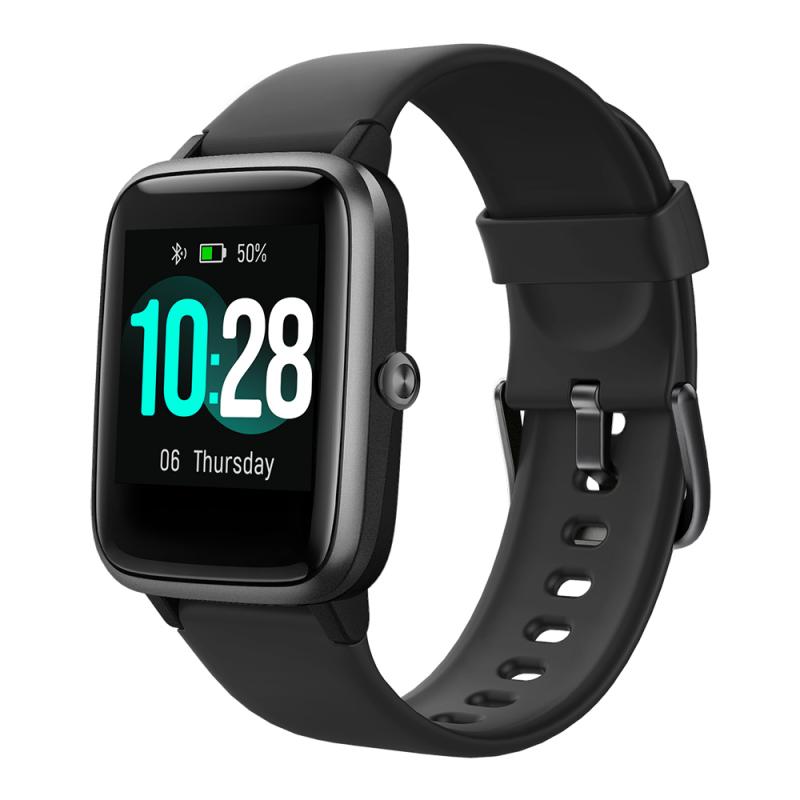How Does A Smart Watch Track Sleep?
In recent years, smartwatches have evolved from simple timekeeping devices to sophisticated health and fitness trackers. One of the most intriguing features of modern smartwatches is their ability to track sleep. Understanding how these devices monitor sleep can provide valuable insights into improving sleep quality and overall health. This article delves into the mechanisms behind sleep tracking in smartwatches, the accuracy of these devices, and practical tips for optimizing their use.
The Mechanisms Behind Sleep Tracking

1. Accelerometers and Motion Sensors
At the core of sleep tracking technology in smartwatches are accelerometers and motion sensors. These sensors detect movement and can differentiate between various types of activity. When you wear a smartwatch to bed, it monitors your movements to determine whether you are awake, in light sleep, or in deep sleep.
- Wakefulness: Frequent and pronounced movements typically indicate that you are awake.
- Light Sleep: Light sleep is characterized by less movement compared to wakefulness but more than deep sleep.
- Deep Sleep: During deep sleep, the body is mostly still, and the smartwatch detects minimal movement.
2. Heart Rate Monitoring
Many smartwatches are equipped with optical heart rate sensors that use photoplethysmography (PPG) to measure your heart rate. By shining a light into your skin and measuring the amount of light that is reflected back, the smartwatch can determine your heart rate. Heart rate variability (HRV) is a key indicator of different sleep stages. For instance, during deep sleep, the heart rate tends to be lower and more stable, while during REM (Rapid Eye Movement) sleep, it may be more variable.
3. SpO2 Sensors
Some advanced smartwatches also include SpO2 sensors that measure blood oxygen levels. Low blood oxygen levels can indicate sleep apnea or other sleep disorders. By monitoring SpO2 levels throughout the night, the smartwatch can provide insights into potential disruptions in your sleep.
4. Algorithms and Machine Learning
The raw data collected by accelerometers, heart rate monitors, and SpO2 sensors are processed using sophisticated algorithms and machine learning models. These algorithms analyze patterns in the data to classify different sleep stages and provide a comprehensive sleep report. Machine learning models are continually updated and refined to improve accuracy based on large datasets.
Accuracy of Sleep Tracking
While smartwatches offer a convenient way to monitor sleep, their accuracy can vary. Several factors influence the reliability of sleep tracking:
- Sensor Quality: The accuracy of the sensors used in the smartwatch plays a significant role. Higher-quality sensors generally provide more reliable data.
- Algorithm Sophistication: The effectiveness of the algorithms used to interpret the data is crucial. More advanced algorithms can better differentiate between sleep stages.
- User Behavior: How the user wears the smartwatch can impact accuracy. For instance, a loose-fitting watch may not accurately detect movements or heart rate.
- Environmental Factors: External factors such as room temperature, noise, and light can also affect sleep tracking accuracy.
Studies have shown that while smartwatches can provide a reasonable estimate of sleep duration and general sleep patterns, they may not be as accurate as polysomnography (PSG), the gold standard for sleep studies conducted in a clinical setting. However, for most users, the convenience and ease of use of smartwatches make them a valuable tool for tracking sleep trends over time.
Practical Tips for Optimizing Sleep Tracking
To get the most out of your smartwatch's sleep tracking capabilities, consider the following tips:
1. Wear the Watch Correctly
Ensure that the smartwatch fits snugly on your wrist. A loose watch may not accurately detect movements or heart rate, leading to less reliable data.
2. Calibrate the Device
Some smartwatches allow you to calibrate the sensors. Follow the manufacturer's instructions to ensure that the sensors are accurately measuring your movements and heart rate.
3. Maintain a Consistent Sleep Schedule
Going to bed and waking up at the same time every day can help improve the accuracy of sleep tracking. Consistent sleep patterns make it easier for the algorithms to detect and classify different sleep stages.
4. Create a Sleep-Friendly Environment
Minimize external factors that can disrupt your sleep. Keep your bedroom cool, dark, and quiet. Consider using earplugs or a white noise machine if you are sensitive to noise.
5. Review and Interpret the Data
Regularly review the sleep data provided by your smartwatch. Look for patterns and trends that can help you understand your sleep habits. Many smartwatches offer insights and recommendations based on your sleep data.
6. Use the Data to Make Informed Decisions
Use the insights gained from your sleep data to make informed decisions about your sleep habits. For example, if you notice that you are consistently getting less deep sleep, you might consider adjusting your bedtime routine or seeking advice from a healthcare professional.
Smartwatches have revolutionized the way we monitor and understand our sleep. By leveraging accelerometers, heart rate monitors, SpO2 sensors, and advanced algorithms, these devices provide valuable insights into our sleep patterns. While they may not be as accurate as clinical sleep studies, smartwatches offer a convenient and accessible way to track sleep trends and make informed decisions about our sleep habits.
As technology continues to advance, we can expect even greater accuracy and more sophisticated features in future smartwatches. For now, by following best practices and regularly reviewing sleep data, users can optimize their sleep tracking experience and take meaningful steps towards improving their sleep quality and overall health.
